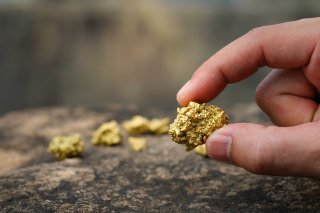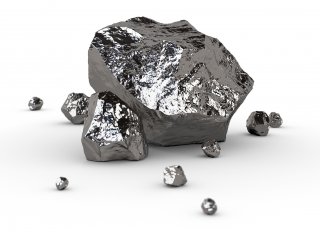TENORM: Hard Rock Metal Mining
There are two main categories of mining in the United States: hard rock mining and coal mining. It is called hard rock mining because the minerals are generally located in igneous and metamorphic formations. Coal, however, is typically found in sedimentary deposits. Learn about TENORM in Coal Mining.
Learn more about TENORM-producing industries and sources in the United States.
Zircon
The mineral zircon (zirconium silicate) generally occurs in nature as a crystal. Most of the naturally occurring radioactive material (NORM) found in zircon is uranium and thorium, which is created during the crystallization of the mineral from the molten host rock when it is initially formed. It is very difficult to remove uranium and thorium without destroying the structure of the crystal.
Since zircon is a coproduct from the mining of other minerals, NORM and technologically enhanced naturally occurring radioactive material (TENORM) can also be found at zircon processing sites. Zircon, along with other minerals of value, are separated from the mineral mix by magnetic and electrostatic separation processes. These processes can be associated with high concentrations of radionuclides because of the presence of radioactive materials other than zircon.
Only a few industries in the United States, such as ceramics, foundry sand, and abrasives, use zircon. Other uses include zirconium metal to protect nuclear fuel and cubic zirconia is a synthetic gemstone.
Gold and Silver

While few studies have been done on gold and silver ores in particular, some mines in the Western United States produce uranium as a secondary product when extracting precious metals. Pitchblende (a naturally occurring material containing uranium) can be found in the same ores as gold and silver. Waste rock from some of these mines may contain radioactive material.
Titanium
Titanium is the ninth most abundant element in the earth’s crust and can be found in nearly all rocks and soils. However, it is not found as a pure metal in nature. Mining of titanium-bearing minerals is usually performed using dredging and dry surface mining techniques. Information about annual production values can be found at the USGS Titanium webpage.

Uranium, thorium, and radium commonly occur in titanium ore, and monazite is found in sands from which the titanium is extracted. When titanium is extracted from the Earth, the related materials, such as mineral sludges, dusts and sands from the titanium extraction process, may contain radioactivity. These materials may have moderately elevated radionuclide concentrations above those of unprocessed rocks and soil. When titanium is further processed, the radionuclides may migrate to dusts, scales and other processing residues, which can lead to higher radionuclide concentrations than in the original, pre-processed material. Isotopes of radium in particular may become concentrated in scales.
Titanium dioxide (TiO2) is the most frequently used form of titanium. Titanium dioxide and consumer goods that contain titanium are essentially free of radioactivity. Ninety five percent of the 6 million tons of titanium dioxide produced worldwide from titanium-bearing rocks, ores, sediments, and soils is used to create titanium dioxide pigments or dyes. Read the International Atomic Energy Agency’s (IAEA), Safety Report Series No. 76: Radiation Protection and NORM Residue Management in the Titanium Dioxide and Related Industries to learn more about titanium dioxide and NORM.
